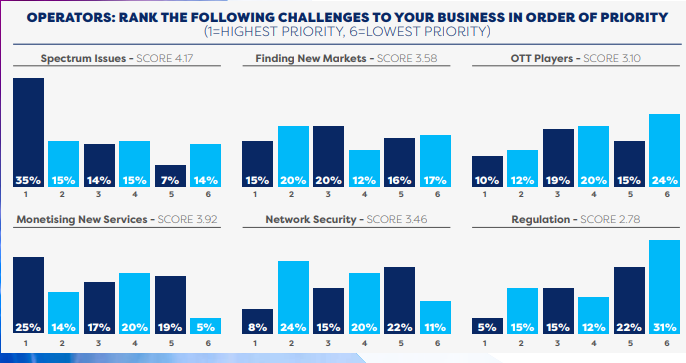 A survey conducted by KNect365 on around 300 stakeholders reveals that majority of the 5G commercial rollout will happen before 2020.
A survey conducted by KNect365 on around 300 stakeholders reveals that majority of the 5G commercial rollout will happen before 2020.
In fact, 86 percent of respondents felt that the roll-out of commercial 5G will be behind us by 2020.
Of the respondent operators, 65 percent were confident that their companies will roll out 5G by 2020.
Already, 5G deployments are making headway in many parts of the world with several leading players like EE and BT announcing plans for the launch in 2019.
While 42 percent of solution providers participated in the survey felt it would be APAC countries that would take the lead in the roll out of 5G, followed by North America (33 percent) and Europe (22 percent), analysts, consultants and associations were more confident the rollout would start with North America, followed by APAC and then by Europe.
However, despite the buoyant mood and peak momentum for 5G rollout across the world, significant challenges remain.
Operators who took the survey said spectrum issues were their biggest headache followed by ways and means of monetizing new services. Finding new markets came in third place.
However, analysts and experts responded that security was one of the biggest hurdles to 5G deployment, while operators consigned it to their penultimate priority during roll out.
The differences in priorities, according to the survey, prove that unless there is consensus from the industry as a whole, 5G rollout will be difficult to implement.
Acquiring the necessary spectrum is one of the biggest challenges, according to both the survey respondents and 5G experts, that operators need to overcome before successfully deploying 5G. The frequency of the spectrum that operators have the access to will greatly impact their 5G strategy.
“Only new radio frequencies, such as 700 MHz and 3.4 to 3.8 GHz frequency bands can bring additional capacity and increase coverage,” says Emmanuel Lugagne Delpon, senior vice president Orange Labs Networks, Orange.
There is also confusion over placement of data centres to minimize latency. “If Multiaccess Edge Computing (MEC) must be deployed, then operators must deploy a mini-data center at each cell tower (or in the proximity) to offer low latency. The latency improvement due to the physical placement of the MEC server should be better than the latency that can be offered from public cloud vendors,” according to R. Ezhirpavai, vice president for Technology at Altran.
5G monetization will emerge as a priority to recoup the spiralling costs that 5G deployment is sure to entail, and network slicing has been put forward as a viable option with the suggestion that operators should offer it as a ‘Networkas-a-Service’ to vendors. These exclusive “slices” could help operators secure better revenues from use of their network.
Another concern surrounding commercial rollout of 5G is the digital divide between urban and rural areas.
Says Alan Patterson, consultant, IT and Telecoms Consultancy FarrPoint, ‘A question mark remains over the extent of 5G network rollout, particularly in more rural areas, and thus whether the advent of 5G could simply serve to deepen the digital divide. If 5G coverage is implemented using the same market driven regime that has been applied up until now, the same issues of not-spots will prevail and serve to widen the digital divide that we already have and add to the problem of disenfranchisement.”





